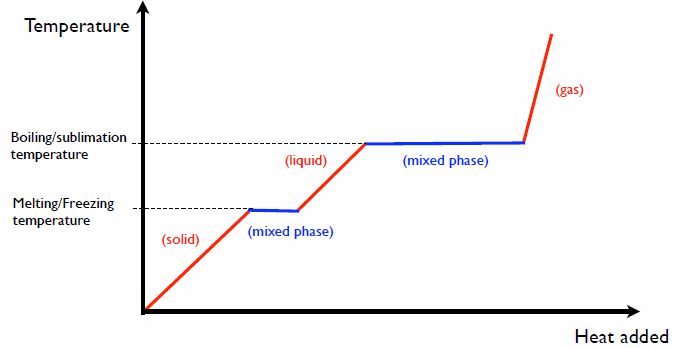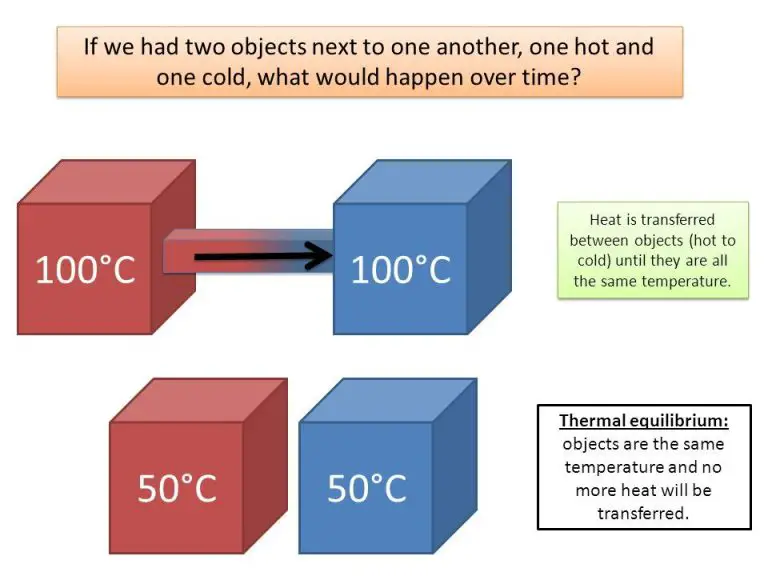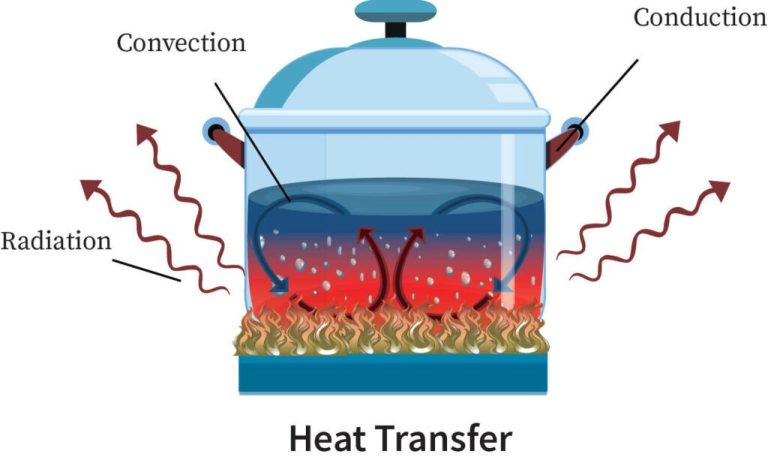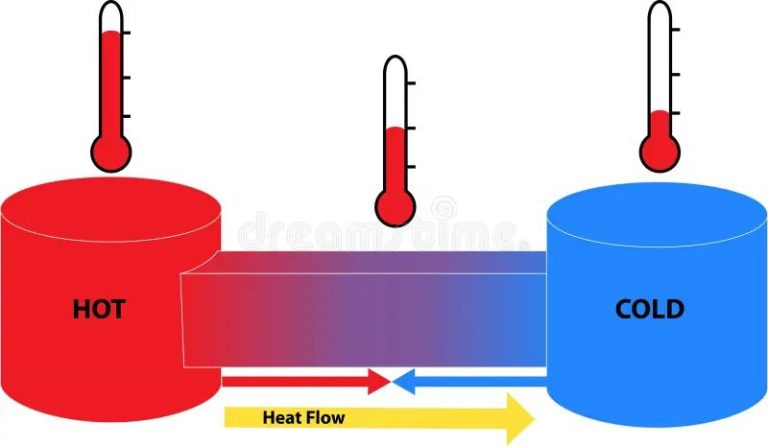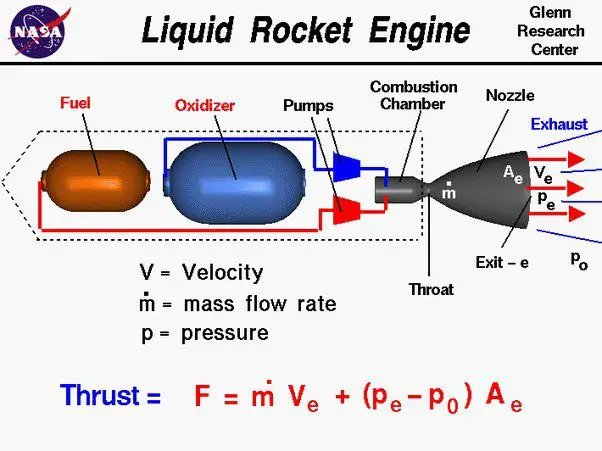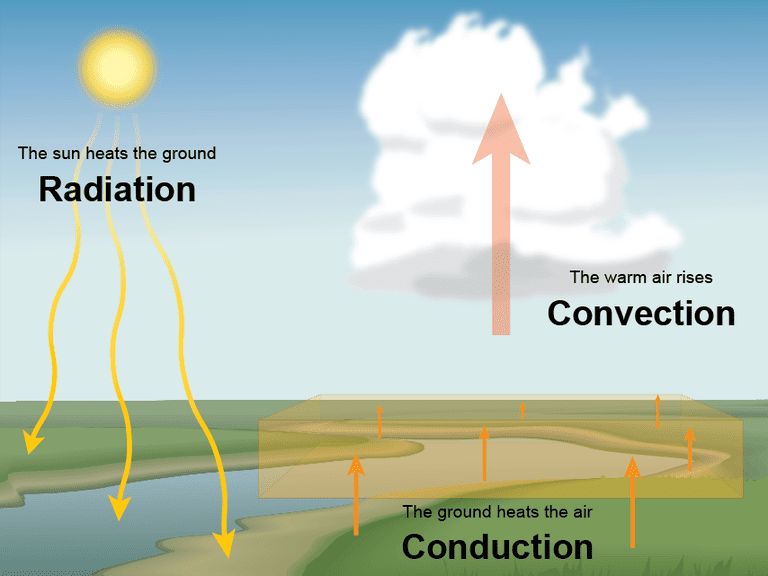Which Source Of Energy Is Thermal?
What is Thermal Energy?
Thermal energy refers to the energy produced from heat. It is one of the fundamental forms of energy and involves the motion of atoms and molecules. Common examples of thermal energy include the heat generated from the sun, friction, and combustion. In physics, thermal energy is referred to as heat or internal energy.
We encounter thermal energy in our everyday lives through a variety of sources. The warmth from sunshine, a fireplace, or a hot stove all consist of thermal energy being transferred. Other examples include the heat dissipated from car engines, industrial equipment, and even our own bodies. Thermal energy flows spontaneously from objects at higher temperatures to those at lower temperatures until equilibrium is reached.
Sources of Thermal Energy
Thermal energy comes from various natural sources that generate heat. The main sources of thermal energy are geothermal energy, biomass, and fossil fuels like natural gas, coal, and oil.
Geothermal energy is thermal energy generated and stored underneath the Earth’s surface. It originates from the original formation of the planet, radioactive decay of minerals, and volcanic activity. Geothermal energy is extracted by drilling wells and pumping hot underground water or steam to the surface, which can then be used to generate electricity.
Biomass refers to organic matter such as plants, wood, agricultural waste, or municipal solid waste. When biomass is burned, the chemical energy inside is released as heat which can be used directly for heating or to generate electricity. Biomass is considered a renewable energy source as long as biomass resources are replenished.
Fossil fuels like natural gas, coal, and oil also contain stored thermal energy and are often burned to produce steam which powers turbines to generate electricity. Unlike renewable sources, fossil fuels are finite resources that take millions of years to form, and their use releases greenhouse gases responsible for climate change.
How Geothermal Energy Works
Geothermal energy taps into the natural heat from the earth’s core to produce renewable energy. The high temperatures deep below the earth’s surface provide a nearly limitless supply of heat that can be harnessed in the form of steam or hot water and used to generate electricity.
To utilize geothermal energy, wells are drilled into areas with hot underground reservoirs. The drilled wells bring the hot water or steam to the surface, which is then used to turn turbines that activate generators and produce electricity. The used geothermal fluid is then recycled back into the earth to be reheated, creating a sustainable closed-loop system.
Geothermal power plants are generally built near tectonic plate boundaries or volcanic hot spots where magma comes closer to the earth’s surface, providing accessible high temperatures. Countries like Iceland, New Zealand, and Costa Rica generate significant portions of their electricity from geothermal energy due to ideal geographical conditions.
Biomass as a Thermal Energy Source
Biomass refers to organic matter that comes from plants and animals. This includes wood, crops, seaweed, and other agricultural and forestry residues. When biomass is burned, the chemical energy inside is released as heat. The most common use of biomass for thermal energy is burning wood.
Wood can be used in homes for heating and cooking through fireplaces, wood stoves, or furnaces. On an industrial scale, wood waste and other biomass is burned in boilers to generate hot water or steam. The steam can then spin turbines to produce electricity. In this way, biomass provides a renewable and sustainable source of thermal energy because plants and trees can be regrown over relatively short periods of time compared to fossil fuels.
In addition to wood, other types of biomass used for thermal energy include agricultural residues like sugarcane bagasse, corn cobs, nut shells, and rice husks. Energy crops such as switchgrass or fast growing trees can also be grown specifically to provide biomass for fuel. Even municipal solid waste like paper, cardboard, food scraps, grass clippings, and tree trimmings can be burned to capture their thermal energy.
Overall, biomass provides a carbon-neutral way to harness thermal energy. As long as new plants and crops are grown at the same rate as biomass is burned, the carbon released is recaptured by the regenerating plants. This makes biomass a renewable and sustainable thermal energy source.
Fossil Fuels for Thermal Power
Fossil fuels like coal, oil and natural gas are commonly used sources of thermal energy. These carbon-rich fuels can be burned to heat water or air, producing steam that can spin turbines to generate electricity. Fossil fuels are primarily used in thermal power plants and heating systems to produce usable thermal energy.
Coal is a combustible black or brownish-black sedimentary rock that is mined and can be burned for energy production. Coal-fired power plants burn coal to heat water, producing high pressure steam that drives turbine generators. Coal provides about 27% of the world’s primary energy needs and generates over 40% of the world’s electricity. However, burning coal produces air pollutants and greenhouse gases.
Oil and petroleum products like diesel, gasoline and kerosene also produce thermal energy when combusted. Petroleum is found deep underground and drilled up for use as a fuel. Like coal, oil can be used to produce steam to drive turbines for electricity generation. It also provides energy for various heating applications.
Natural gas is a fossil fuel comprised mainly of methane and is found in underground deposits or extracted from other gas and oil drilling. When burned, natural gas produces thermal energy that can be used for electricity production, heating, cooking and more. Natural gas accounts for about 22% of the world’s energy needs. Modern natural gas power plants can achieve high efficiencies for converting gas to useful energy.
Advantages of Thermal Energy
There are several key benefits to using thermal energy sources for power generation and heating applications:
Some renewable sources like geothermal and biomass provide constant heat production without direct greenhouse gas emissions. Geothermal taps into the immense heat beneath the earth’s surface to produce steam that drives turbines. Biomass utilizes organic waste materials that can be burned directly for heat. Using these renewable thermal sources helps mitigate climate change impacts compared to fossil fuel combustion.
Thermal generation can provide a reliable, constant stream of energy. Sources like coal, natural gas, nuclear and geothermal produce heat consistently, allowing thermal power plants to provide base load electricity not reliant on weather conditions. The steady heat output helps balance grid power demands.
Thermal generation from fossil fuels or nuclear plants have high capacity factors since they can run continuously. This constant production results in more efficient overall generation. The reliable energy supply also assists grid reliability.
Thermal energy can directly provide heating in buildings and industrial processes. Sources like natural gas and biomass burn to produce usable heat for space heating, cooking, hot water and more. This direct use of thermal energy for heating avoids the losses from electricity generation, transmission and conversion back into heat.
Disadvantages of Thermal Energy
While thermal energy sources provide significant power generation capabilities, they also come with some downsides. Two major disadvantages of thermal energy are pollution from fossil fuels and geographical limitations.
Many thermal power plants burn fossil fuels like coal, oil and natural gas to generate electricity. The combustion of these fuels releases pollutants into the air like carbon dioxide, sulfur dioxide and nitrogen oxides. This contributes to environmental problems like acid rain, smog and climate change. Coal power plants are especially heavy polluters.
Geothermal energy is restricted to areas with suitable hydrothermal resources where hot water and steam can be tapped from underground. This limits the widespread adoption of geothermal power. Biomass energy is dependent on suitable land area to grow dedicated energy crops. Fossil fuels have to be extracted from limited geographical deposits as well. The availability of thermal energy sources is therefore tied to location.
Thermal Energy Applications
Thermal energy has many important applications in society today. Some of the main uses are electricity production, heating/cooling systems, and industrial processes.
One of the most well-known applications is using thermal energy sources like coal, natural gas, and nuclear power to produce electricity. The heat from these sources converts water into steam, which then spins turbines to generate electricity. Thermal power plants generate a large percentage of the world’s electrical supply.
Heating and cooling systems also rely heavily on thermal energy. Furnaces and boilers use natural gas, heating oil, or electricity to heat homes and businesses. Air conditioners and heat pumps move heat out of or into buildings to provide cooling and heating. Geothermal heat pumps use shallow earth energy to efficiently control building temperatures.
Industrial facilities utilize thermal energy for manufacturing processes that require high temperatures. The metals, chemical, petroleum, and material production industries depend on thermal energy. Heat treating metals, smelting, drying materials, cooking chemicals, and distillation are some examples of thermal industrial processes.
Thermal Energy Efficiency
There are several ways to improve the efficiency of thermal energy systems:
Cogeneration/Combined Heat and Power
Cogeneration, also known as combined heat and power (CHP), involves capturing the waste heat from electricity generation and using it for heating purposes. This allows the same fuel source to provide both electricity and usable heat, greatly improving overall efficiency. Modern cogeneration systems can achieve total efficiency of up to 80-90%.
Waste Heat Recovery
Waste heat from industrial processes and power generation can be captured and reused for heating applications. Technologies like heat exchangers, heat pumps, and steam generators can recover heat from hot exhaust streams that would otherwise be wasted. This improves the overall thermal efficiency.
Improving Power Plant Efficiency
Upgrading power plant components and switching to more efficient thermal cycles can significantly improve efficiency. For example, combined cycle power plants use both gas and steam turbines to convert heat into mechanical energy. Advances in materials, turbine design, etc. have allowed thermal efficiencies of over 60% in modern plants.
Future of Thermal Energy
The future of thermal power seems to be trending toward more renewable sources like geothermal and biomass, as well as improved technologies like carbon capture and storage (CCS) for fossil fuels. There is also a major focus on increasing efficiency through cogeneration and improved power plant designs.
Geothermal and biomass energy are renewable sources that can provide consistent baseload power similar to fossil fuels, but without the carbon emissions. Geothermal uses heat from the Earth’s interior to produce steam and generate electricity. Biomass utilizes organic matter like plants, wood, and waste to fuel power plants. Both sources have substantial potential for expanded capacity.
Fossil fuels will continue playing a major role in thermal power, but new technologies like CCS seek to reduce their environmental impact. CCS captures CO2 emissions from power plants before they are released into the atmosphere. The CO2 can then be stored underground or used for other applications. Widespread CCS deployment could allow fossil fuels to be part of a low carbon energy system.
There is also a major push to increase the efficiency of thermal power plants. Upgrading older plants, using cogeneration systems that capture waste heat, and improving plant designs can all increase the amount of useful energy produced per unit of fuel. More efficient plants mean lower fuel costs and reduced emissions.
Through a combination of increased renewables, cleaner fossil fuels, and higher efficiency, the future of thermal power seems to be trending toward a more sustainable energy system with lower carbon emissions.

